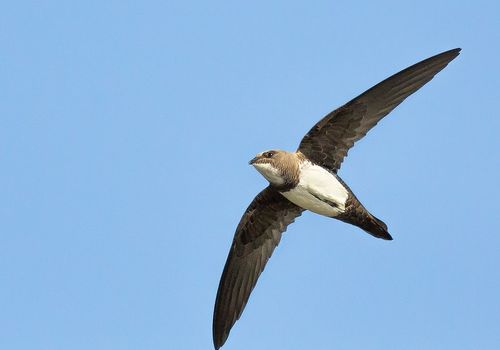
Alpine swift
Tachymarptis melbaAlpine swift
Introduction: Alpine swifts (Tachymarptis melba) forage over a wide range of habitats including, grassland, rivers, semi-desert, desert and scrub and savannah. They can be observed in small groups and are high-flyers. Pairs roost on nests or clinging to a rock face.
Distribution: T.m. Africanus are widespread in the western two-thirds of Namibia including Etosha National Park, Windhoek, Spitzkoppe, Brandberg Mountain and southern Namibia extending south to the Orange River. T.m. Marjoriae are confined to the north-western regions of the country such as Epupa Falls and Marienfluss Valley.
Diet: Forages higher than other swifts and swallows as well as low over water. Eats small grasshoppers, bugs, wasps, dragonflies, ants, beetles and butterflies. They drink in flight by skimming the surface of water or by catching water droplets dripping from ridges above caves.
Description: Large, mottled brown swifts. Tachymarptis is the Greek word for 'a fast seizer'
Breeding: Breeds in mountainous areas. Nests are made of feathers or plant material to form a shallow cup. Just 1 or 2 eggs are laid between September to March. Incubation periods are around 20 days. Pairs bond and are known to stay together for 10 years or more.
Size: 15cm.
Weight: 75g.
Klein Windhoek

